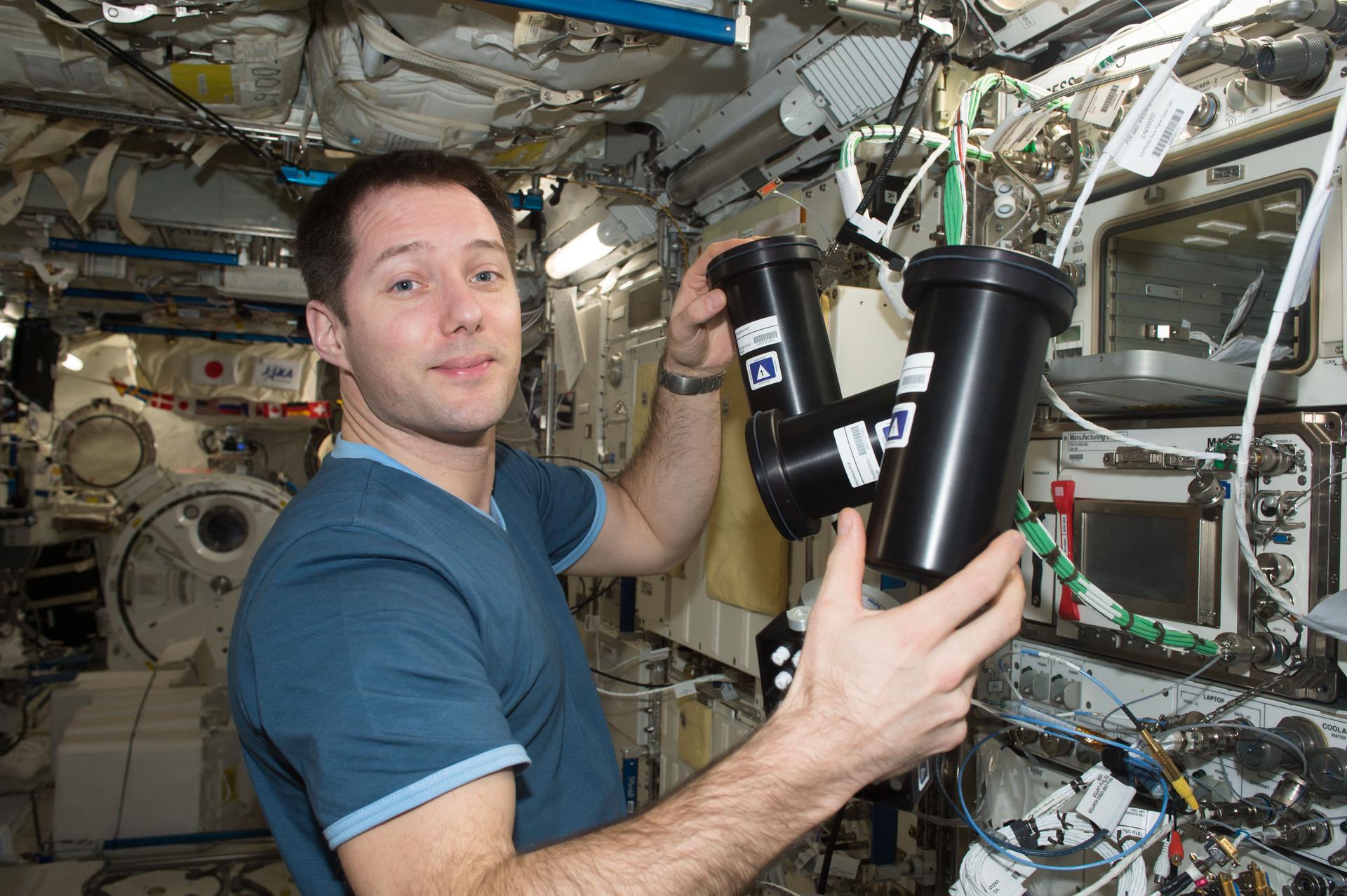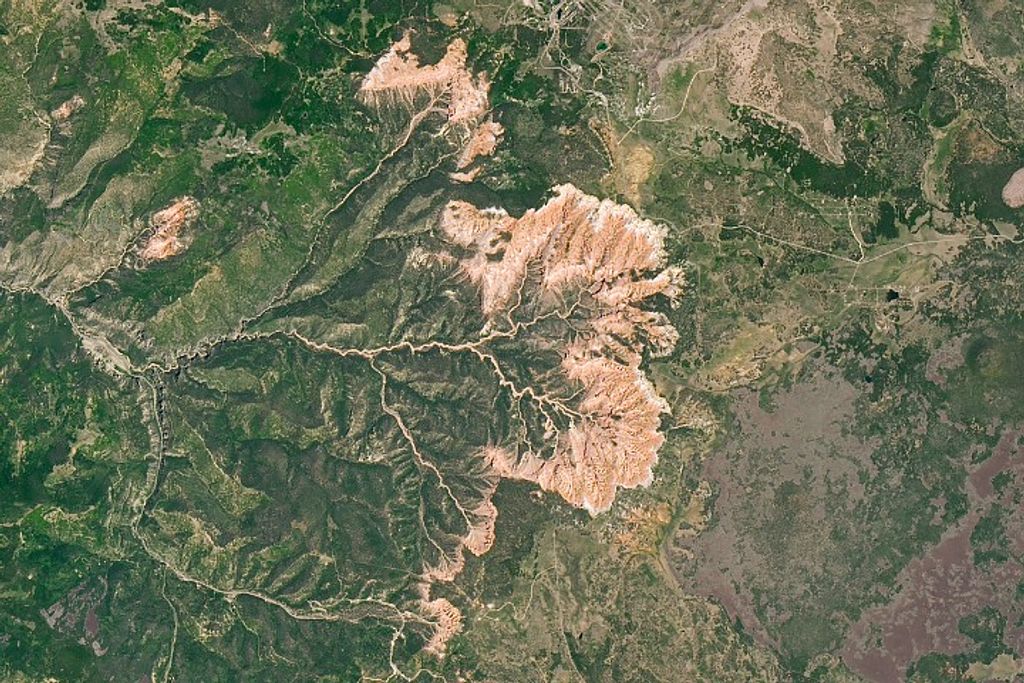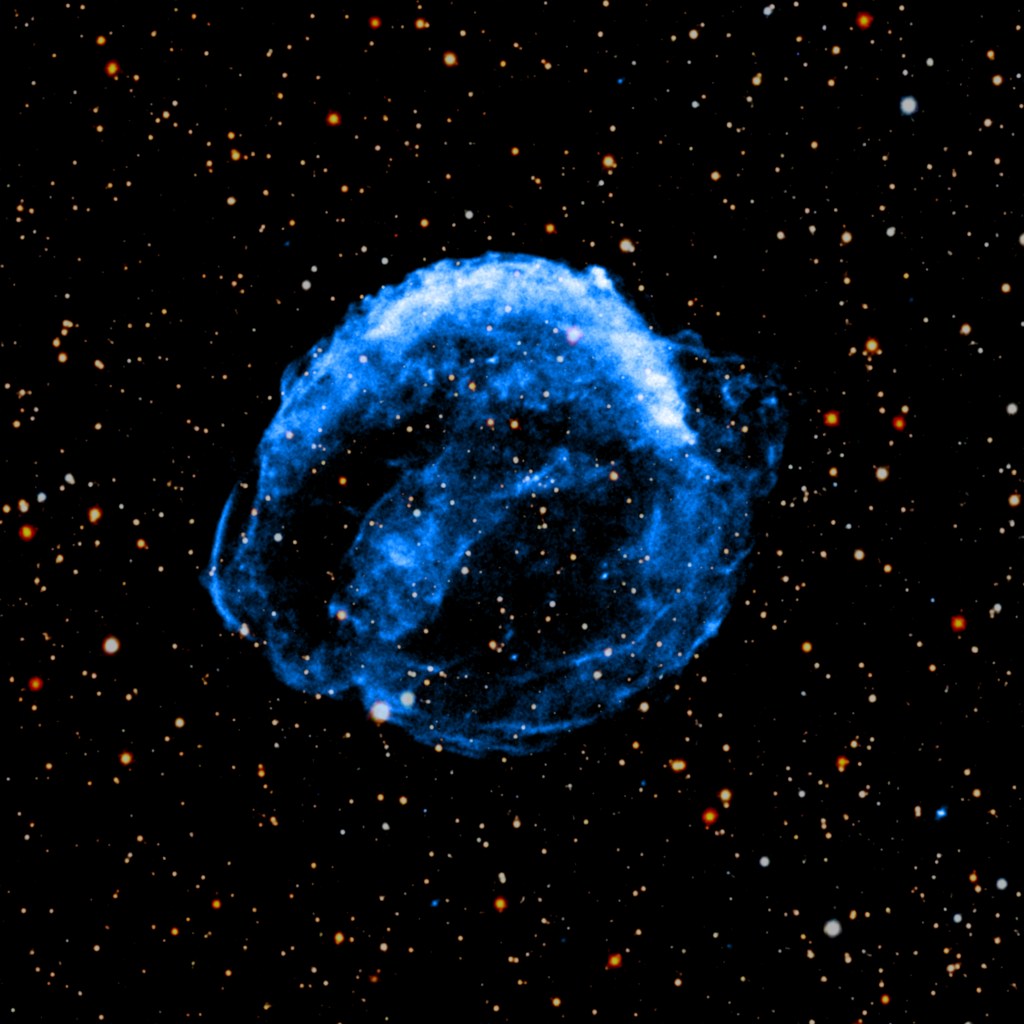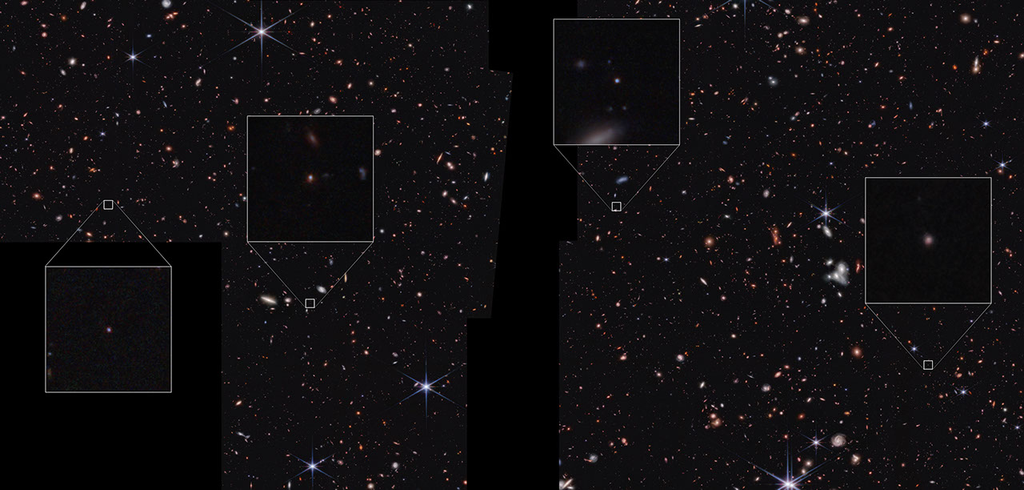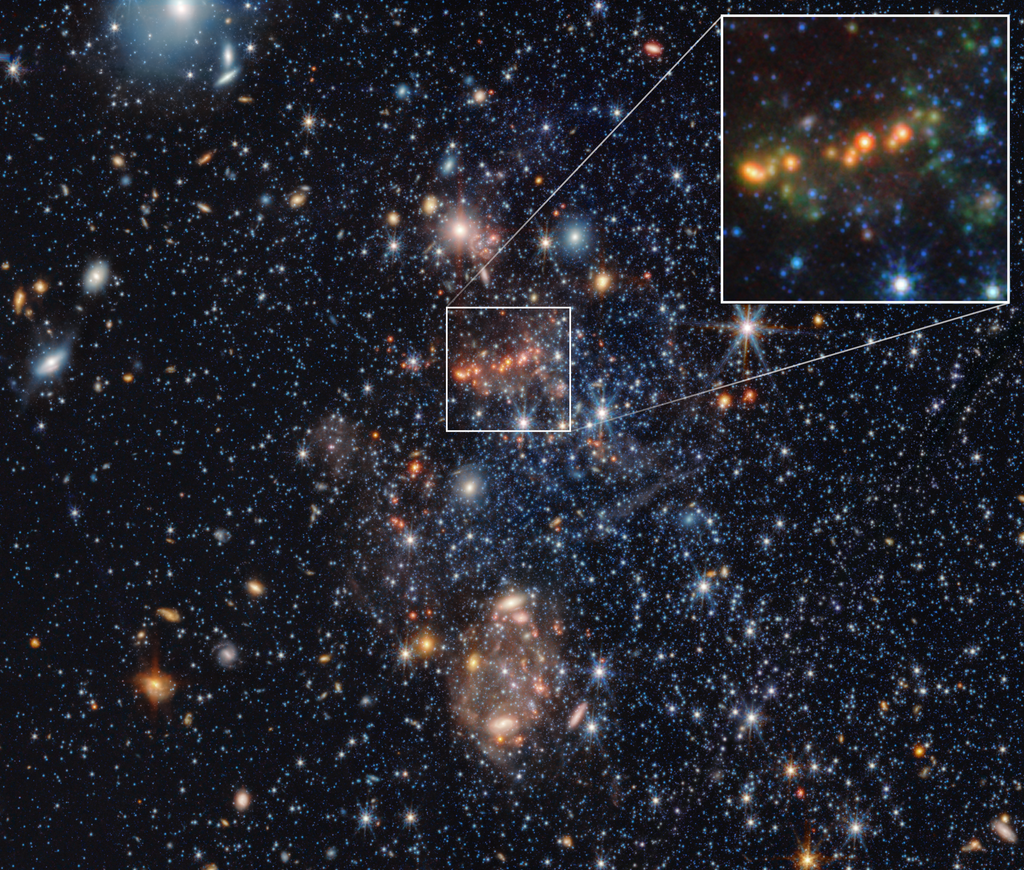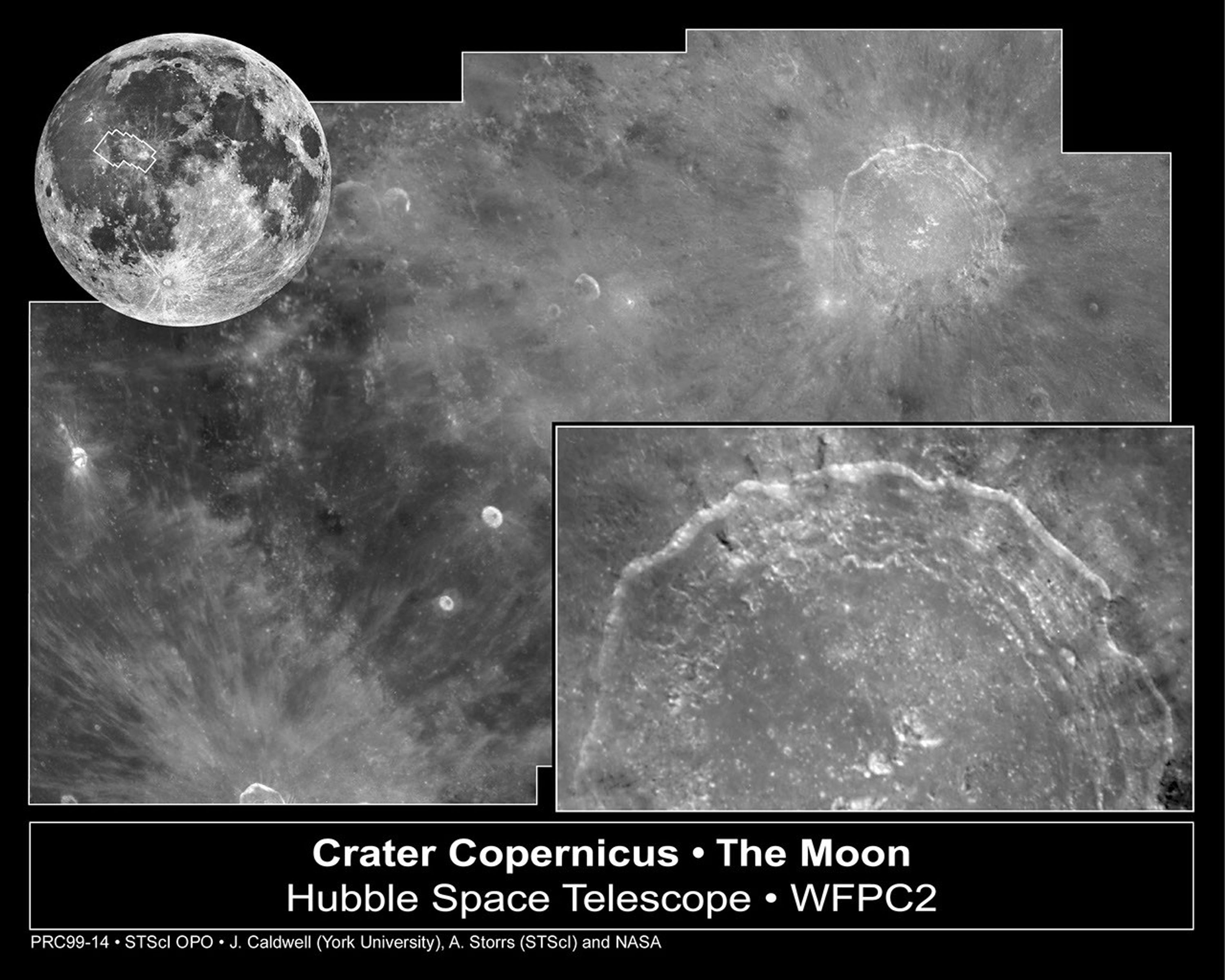In a change of venue from peering at the distant universe, the Hubble telescope has taken a look at Earth's closest neighbor in space, the Moon. Hubble was aimed at one of the Moon's most dramatic and photogenic targets, the 58-mile-wide (93-kilometer) impact crater Copernicus.
The image was taken while the Space Telescope Imaging Spectrograph was aimed at a different part of the moon to measure the colors of sunlight reflected off the Moon. The picture at upper left is a full view of the moon taken by a terrestrial telescope. The wide, central image is Hubble's crisp, bird's-eye view, which clearly shows the ray pattern of bright dust ejected out of the crater over one billion years ago when an asteroid larger than a mile across slammed into the Moon. A close-up view of Copernicus's terraced walls is shown at lower right.





